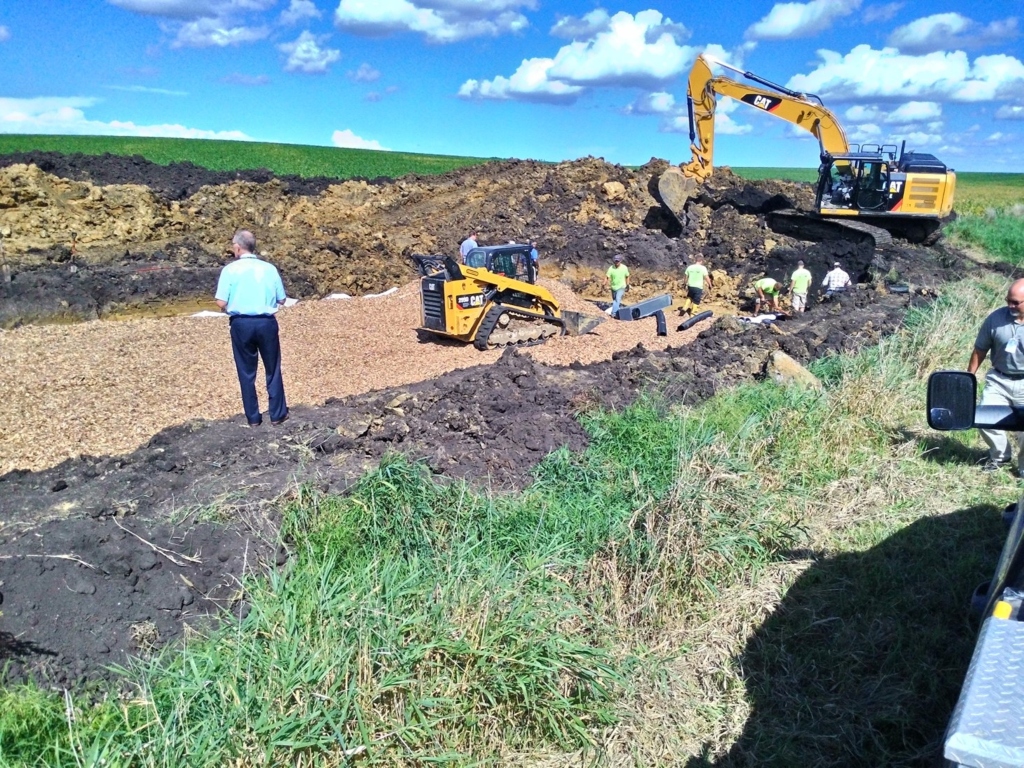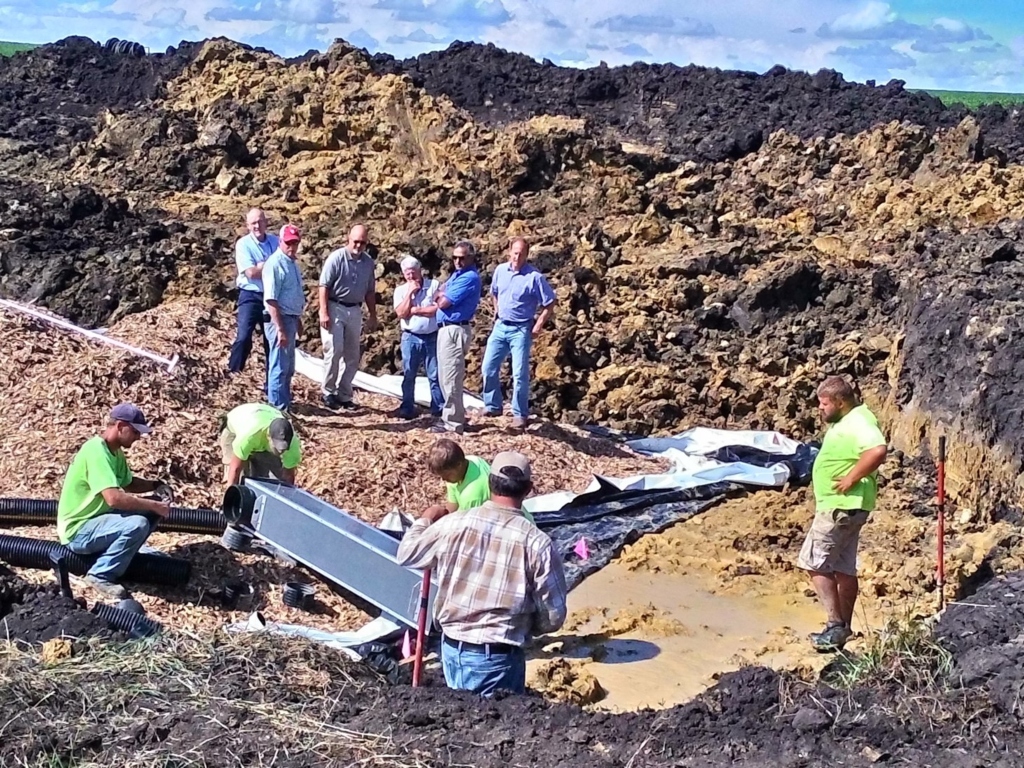The partnership focused on implementing strategies to reduce nutrient levels and flooding in the 2,417-square-mile Middle Cedar watershed. Specifically, the project covers a total of 135,000 acres in five watersheds located in Benton, Tama, and Black Hawk Counties.
During 2014 and 2015, before the project officially launched, the Benton/Tama Nutrient Reduction Demonstration Project and Miller Creek Water Quality Initiative Project worked on educating farmers on agricultural conservation practices. The City of Cedar Rapids then identified community and agricultural partners to assist the project through funding and educational resources. A total of 16 entities joined the partnership, including key stakeholders such as the Natural Resources Conservation Service, Iowa State University, and the Iowa Soybean Association.
The Iowa Soybean Association produced watershed plans, identified sub-watershed areas, and mapped landscape characteristics to determine which strategies would be most effective and produce the greatest impact for the surrounding communities. The watershed plans also outlined monitoring and evaluating processes of the strategies for future analysis, including nitrate and phosphate levels in the Middle Cedar River watershed. The City used the watershed plans and maps to prioritize locations to use the strategies to optimize the benefits and effectiveness of the project. The strategies the partnership decided to implement and analyze included cover crops, nutrient management, wetland creation, and other water quality improvement practices.
The City then worked with partners to implement the strategies in the designated areas by providing landowners and farmers with financial and technical assistance. The Linn County NRCS office established contracts with local landowners and farmers to implement the conservation practices.
The project also incorporated outreach activities and technical assistance, including webinars, field days, social media campaigns, and direct mail campaigns. To support community engagement, the project hired an outreach coordinator who was responsible for engaging local farmers on the issue and identifying individuals who were willing to implement the strategies. The coordinator also provided direct technical assistance, supporting farmers with on-farm conservation planning and funding applications. The coordinator used the funding opportunities and technical assistance as incentives for participation in the project, which increased community buy-in and long-term sustainability. Throughout the process, the City collaborated with its partners to provide the relevant educational content and information on the strategies to landowners and farmers in the Middle Cedar River watershed.
Funding
The project was awarded $1.6 million from the federal USDA-NRCS Regional Conservation Partnership Program. Pledges made by each of the 16 partners provided additional funding totaling over $1.9 million. These funding sources covered the project for five years, beginning in June 2015, through June 2020. The funding provided technical and financial cost-share assistance to help landowners and farmers to implement the strategies.
Timeline
The City of Cedar Rapids began discussing the project in 2014. The project started in June 2015 and ended in June 2020. However, the City of Cedar Rapids hopes to continue the project and intends to submit a proposal for future RCPP funds.




